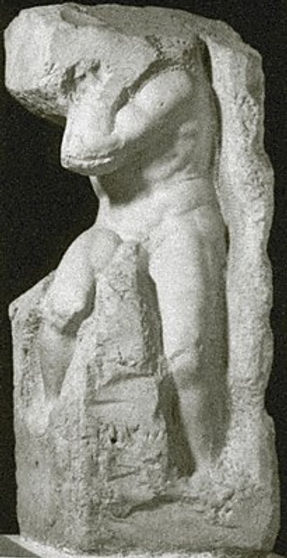<A>
high-Renaissance paganism: *
Primavera, a large panel painting in tempera paint by Botticelli (1482); commissioned by one of the Medici family. It depicts figures from classical mythology in a garden; no story has been found that brings this particular group together. It is probably an allegory based on the lush growth of Spring. Accounts of any precise meaning vary, many involve the Renaissance Neo-Platonism which then fascinated intellectual circles in Florence. Drew from a number of classical & Renaissance literary sources, including Ovid & Lucretius, and may also allude to a poem by Poliziano (the Medici house poet who may have helped Botticelli devise the composition). The first large scale depiction of subjects from classical mythology since classical antiquity. SEE ILLUSTRATION BELOW LEFT
Birth of Venus, Botticelli (1485), commissioned by the Medici, it depicts the goddess Venus arriving at the shore after her birth, when she had emerged from the sea fully-grown, a traditional scene from Greek mythology. Like Primavera, such a depiction of subjects from classical mythology on such a large scale were virtually unprecedented in Western art since classical antiquity, as was the size and prominence of a nude female figure in the Birth. It is an emulation of ancient painters & reflects the influence of Renaissance Neo-Platonism. SEE ILLUSTRATION BELOW RIGHT


<B>
Michelangelo (marble as foe): *
The Bound Slave, aka The Atlas Slave (2.77m high marble, one of the later figures for Pope Julius' tomb); dated to 1525–1530; unfinished. The works, known collectively as The Captives, each show the figure struggling to free itself, as if from the bonds of the rock in which it is lodged. They give a unique insight into the sculptural methods that Michelangelo employed and his way of revealing what he perceived within the rock.
